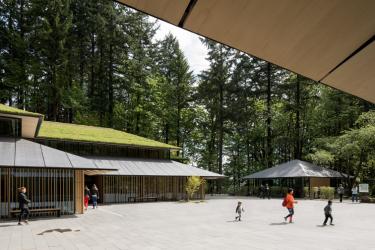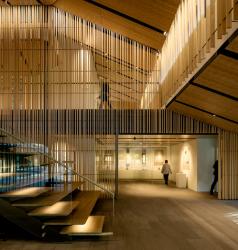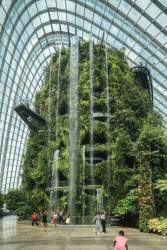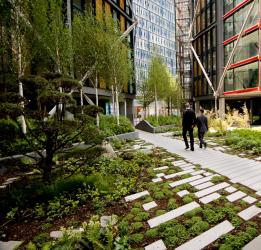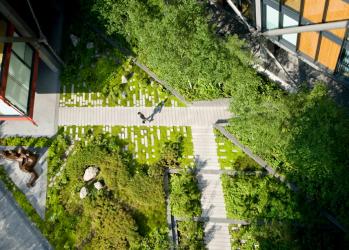Cultural Crossings, Portland, Oregon | Architect: Kenga Kuma & Associates | Photography courtesy of Kenga Kuma & Associates: The Portland Japanese Garden was an already celebrated landscape more than five decades old, but an expansion by Kenga Kuma & Associates employed traditional Japanese building techniques with contemporary materials to make the new and old portions of the garden blend together seamlessly. The project aimed to further the garden’s purpose of intercultural exchange and dynamic learning; the existing garden was already renowned as one of the most authentic Japanese gardens outside of Japan, but the addition adheres more closely with modern and contemporary Japanese design practices and aesthetics. Through using a more modern approach, Cultural Crossings became more than a preservation of Japanese gardening traditions in the Portland area and embraced environmental developments while showcasing a cultural union. One way they exemplified this marriage of old and new was through an authentic medieval castle wall on the west edge of the plaza built by a 15th-generation Japanese stonemason using only local materials, such as Eastern Oregon Baker Blue granite. The gardens are now a shining example not of how our cultures differ, but how we can learn and grow from the people around us.
Gardens by the Bay, Marina Bay, Singapore | Architect: Grant Associates | Photography by Darren Soh: You can experience the splendor of nature both indoors and out in the Gardens by the Bay in Singapore. Inspired by the orchid flower, the national flower of Singapore, the gardens’ design follows the exotic beauty and physiology of the orchid with its appearance and energy management, especially water and waste. Designed by Grant Associates in 2006, the Bay South Garden contains eye-catching attractions, starting with Dragonfly Lake where most tourists enter on the 440-meter boardwalk. To spot real dragonflies, use binoculars on the walk’s northern end. Next comes the Heritage Gardens, which represent Singapore’s three main enthic groups (Chinese, Malay and Indian) as well as the country’s colonial heritage through the spice trade. Perhaps the most iconic architectural aspect of the Bay South Gardens, are the Supertrees. Each stand 25 to 50 meters tall and, aside from their striking appearance, they also provide shade for this section of the gardens and house numerous plant species within their trunks. A walk on the OCBC Skyway, which connects the treetops, will give visitors a breathtaking view of the gardens and the surrounding city.
NEO Bankside, London,United Kingdom. | Architect: Gillespies | Photography courtesy of Gillespies/Jason Gairn: The main focus of the outdoor area at the NEO Bankside Development, an upscale apartment building in the heart of London, was to wed both the private aspects of a personal garden with the energy of a public park in town. These spaces allow residents to engage with nature while creating a micro-ecological environment inside a bustling urban setting. To separate the space from the city clamor, the gardens are lined with trees to create tranquil green spaces filled with seasonal fruit trees, bee hives and an herb garden. Linear groves of aspen and birch trees create a public area between the apartment complex and the neighboring building, Tate Modern. The landscape architects wanted this space to be beautiful and functional while making as minimal of an environmental impact as possible. To achieve this, they planted a wide variety of native plants, which would not only grow robustly and tolerate local weather conditions and the stresses of a public environment, but would serve to educate residents about their native flora as well. With sustainability and biodiversity in mind, the gardens of NEO Bankside provide an oasis amidst a busy city scape.


